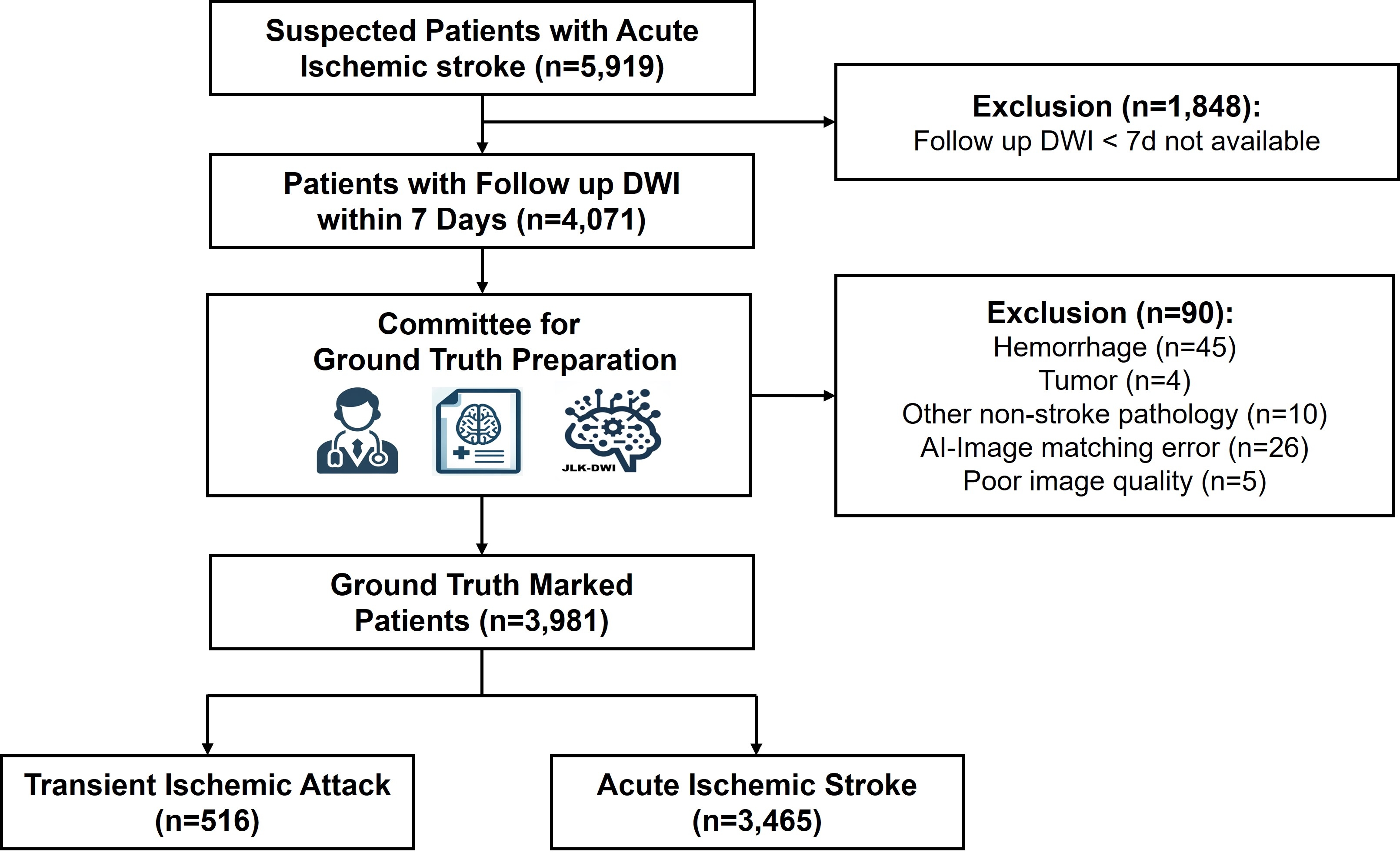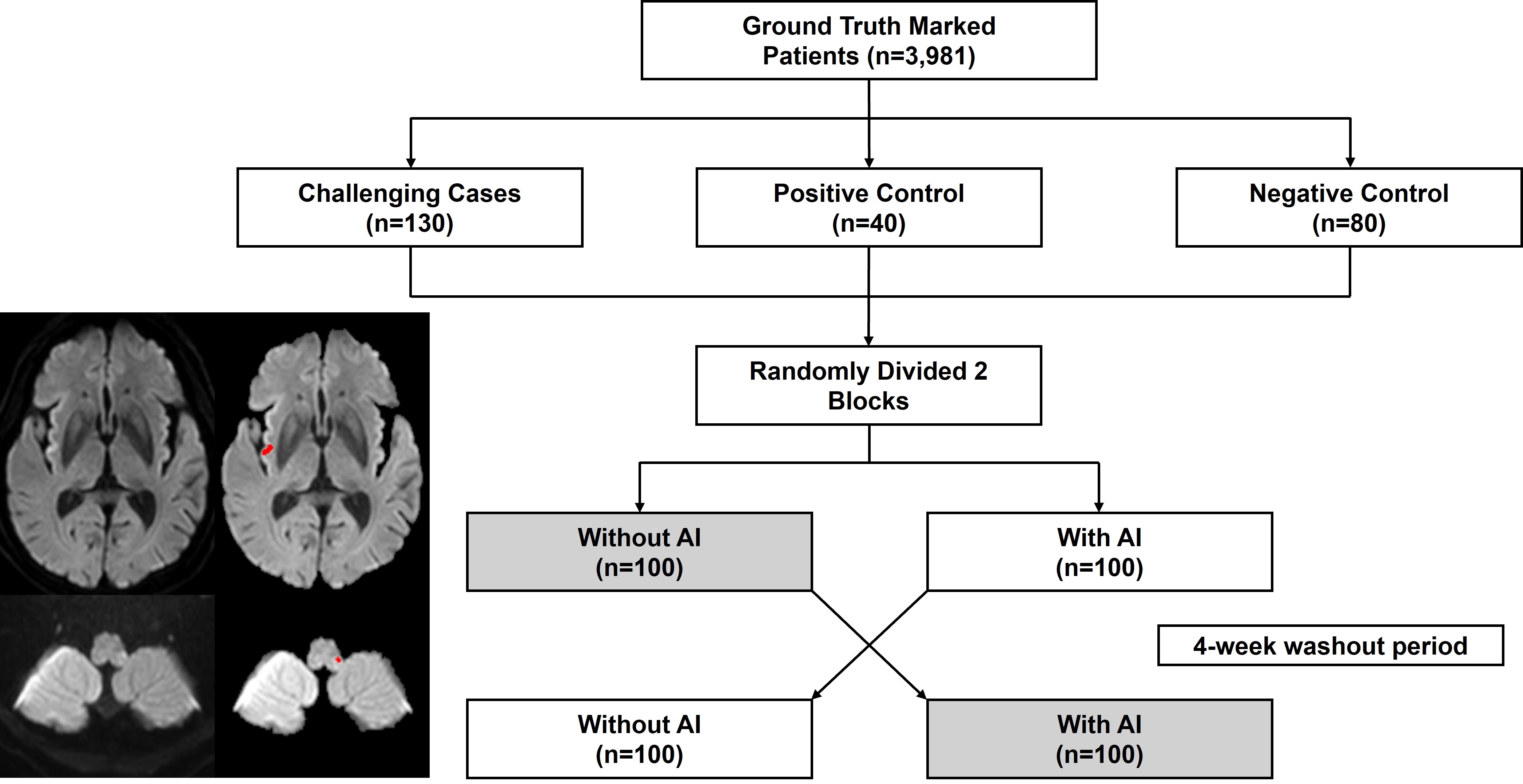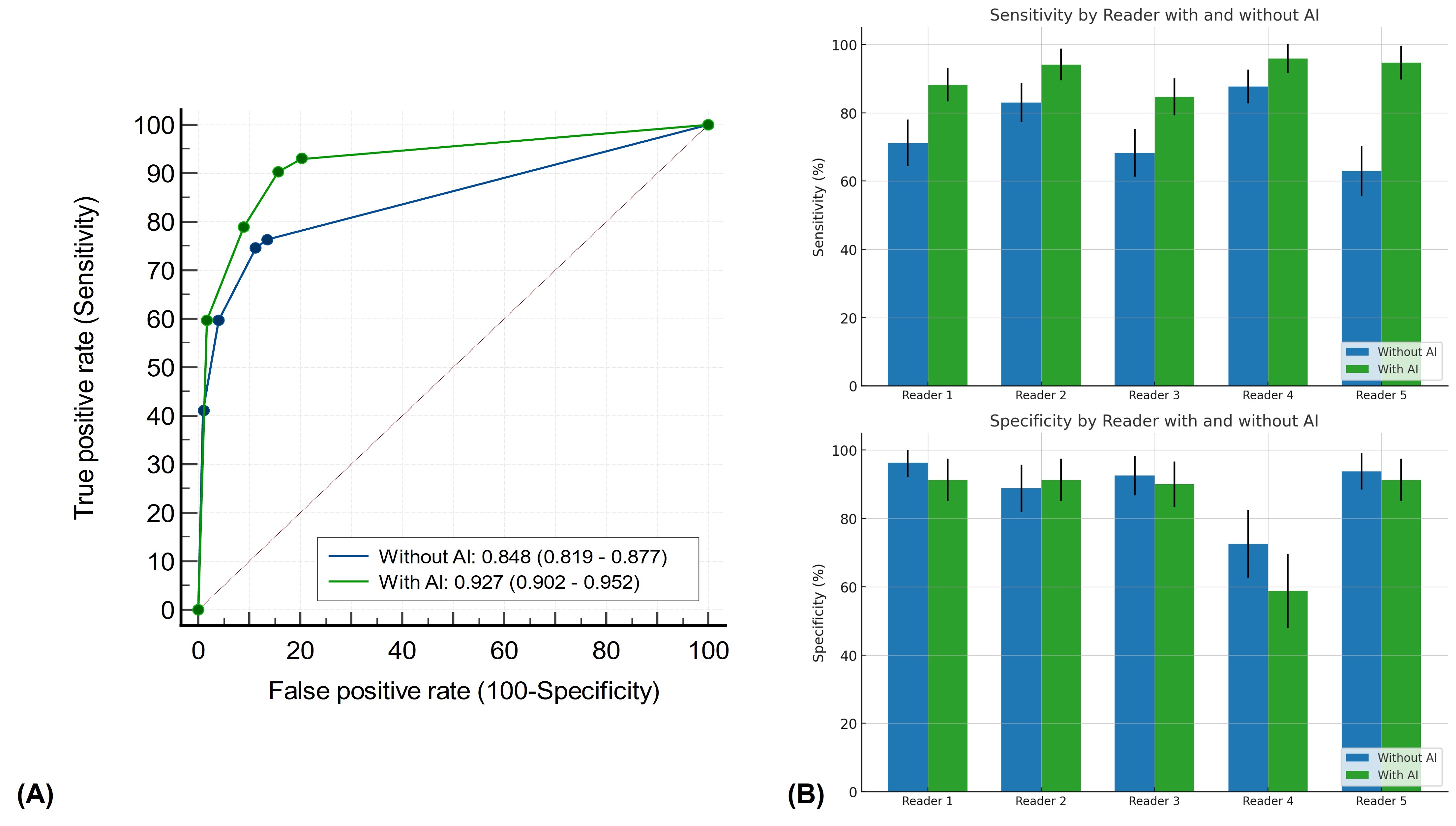Final ID: TMP59
Artificial Intelligence Improves Detection Sensitivity for Challenging Acute Ischemic Stroke Lesions on Diffusion-weighted Imaging
Diffusion-weighted imaging (DWI) is key for detecting acute ischemic brain lesions but struggles with hyperacute or small lesions that mimic artifacts. This randomized crossover trial assessed whether an artificial intelligence (AI) solution enhances diagnostic accuracy for these challenging lesions compared to conventional interpretation.
Methods
From February 2017 to November 2021, 4,071 suspected acute ischemic stroke patients underwent initial and follow-up DWI. A neurologist assessed ischemic stroke based on medical records, and a neuroradiologist established the ground truth using the neurologist's evaluation, MRI reports, and AI-marked DWI images. The accuracy of AI and MRI reports was then evaluated against this ground truth.
For a reader performance study, 874 challenging cases were selected: (1) infarct volume < 0.5 mL in the posterior circulation on follow-up DWI or (2) initial DWI within 3 hours of onset with infarct volume < 1.0 mL in the anterior circulation. Additionally, 80 negative and 40 positive control cases were included. Five readers (a neuroradiologist, two radiology residents, and two neurology residents) interpreted the DWIs, half with AI assistance and half without. After a 4-week washout, cases were re-evaluated with the groups reversed. We compared the area under the receiver operating characteristic curve (AUC), sensitivity, specificity, and Dice similarity coefficient (DSC) between readings with and without AI.
Results
Of 3,981 patients, 3,465 had acute ischemic strokes, and 516 had MRI-negative transient ischemic attacks. The AI alone showed a positive predictive value (PPV) of 93.1% and a negative predictive value (NPV) of 81.3%. The PPV of AI varied significantly with predicted infarction volume: 81.7% for ≤ 0.5 mL vs. 99.5% for > 0.5 mL. With AI, the sensitivity of MRI reports could potentially increase from 98.5% to 99.7%, ensuring identification of all false negatives.
In the challenging case reader study, AI significantly increased AUC (0.848 vs. 0.927; p < 0.001) and sensitivity (74.59% to 90.59%; p < 0.001), with minimal impact on specificity (88.75% vs. 84.00%; p = 0.0496). AI-assisted segmentation also showed higher DSC compared to non-AI segmentation (0.742 vs. 0.523; p < 0.001).
Conclusions
AI significantly improved the diagnostic performance for challenging acute ischemic lesions on DWI, demonstrating the potential to enhance stroke care.
More abstracts on this topic:
Alkhaleefah Mohammad, Balakrishnan Guha, Li Shuo, Nasir Khurram, Al-kindi Sadeer, Gullapelli Rakesh, Bose Budhaditya, Rockers Elijah, Modanwal Gourav, Hoori Ammar, Madabhushi Anant, Wilson David, Patel Kershaw
A Deep Learning Topic Analysis Approach for Enhancing Risk Assessment in Heart Failure Using Unstructured Clinical NotesAdejumo Philip, Pedroso Aline, Khera Rohan
Readers' Comments
We encourage you to enter the discussion by posting your comments and questions below.
Presenters will be notified of your post so that they can respond as appropriate.
This discussion platform is provided to foster engagement, and simulate conversation and knowledge sharing.
You have to be authorized to post a comment. Please, Login or Signup.



